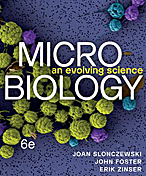Streptococcus mutans: Difference between revisions
No edit summary |
|||
| Line 19: | Line 19: | ||
Describe the appearance, habitat, etc. of the organism, and why it is important enough to have its genome sequenced. Describe how and where it was isolated. | Describe the appearance, habitat, etc. of the organism, and why it is important enough to have its genome sequenced. Describe how and where it was isolated. | ||
Include a picture or two (with sources) if you can find them. | Include a picture or two (with sources) if you can find them. | ||
Streptococcus mutans is the primary bacterium involved in plaque formation and initiation of dental caries (tooth decay) worldwide and is considered to be the most cariogenic of all of the oral streptococci. This Viewed as an opportunistic infection, dental disease is one of the most prevalent and costly infectious diseases in the United States. Streptococcus mutans is carried by virtually everyone and it is found mostly on tooth surfaces. One tooth may have a large number of these bacteria, while the tooth next to it may have only a small number. The bacteria are most concentrated in the crevices, pits, fissures that are a normal part of the teeth and surrounding structures. S. mutans predominantly spherical or avoid in shape in a long chain-like figure, but rod forms do occur. S. mutans has a typical cell wall structure of a gram positive organism, comprised of peptidoglycan and polysaccharide, and poly-(glycerophosphate) chains of lipoteichoic acid which extend from the membrane, and cell wall or surface proteins. (51) and give a red gram positive staining reaction. | |||
==Genome structure== | ==Genome structure== | ||
Revision as of 06:38, 31 May 2007
A Microbial Biorealm page on the genus Streptococcus mutans
Classification
Higher order taxa
Domain; Phylum; Class; Order; family [Others may be used. Use NCBI link to find]
Species
|
NCBI: Taxonomy |
Genus species
Description and significance
Describe the appearance, habitat, etc. of the organism, and why it is important enough to have its genome sequenced. Describe how and where it was isolated. Include a picture or two (with sources) if you can find them.
Streptococcus mutans is the primary bacterium involved in plaque formation and initiation of dental caries (tooth decay) worldwide and is considered to be the most cariogenic of all of the oral streptococci. This Viewed as an opportunistic infection, dental disease is one of the most prevalent and costly infectious diseases in the United States. Streptococcus mutans is carried by virtually everyone and it is found mostly on tooth surfaces. One tooth may have a large number of these bacteria, while the tooth next to it may have only a small number. The bacteria are most concentrated in the crevices, pits, fissures that are a normal part of the teeth and surrounding structures. S. mutans predominantly spherical or avoid in shape in a long chain-like figure, but rod forms do occur. S. mutans has a typical cell wall structure of a gram positive organism, comprised of peptidoglycan and polysaccharide, and poly-(glycerophosphate) chains of lipoteichoic acid which extend from the membrane, and cell wall or surface proteins. (51) and give a red gram positive staining reaction.
Genome structure
Describe the size and content of the genome. How many chromosomes? Circular or linear? Other interesting features? What is known about its sequence? Does it have any plasmids? Are they important to the organism's lifestyle?
Cell structure and metabolism
Describe any interesting features and/or cell structures; how it gains energy; what important molecules it produces.
Ecology
Describe any interactions with other organisms (included eukaryotes), contributions to the environment, effect on environment, etc.
Pathology
How does this organism cause disease? Human, animal, plant hosts? Virulence factors, as well as patient symptoms.
Application to Biotechnology
Does this organism produce any useful compounds or enzymes? What are they and how are they used?
Current Research
Enter summaries of the most recent research here--at least three required
References
Edited by student of Rachel Larsen and Kit Pogliano
